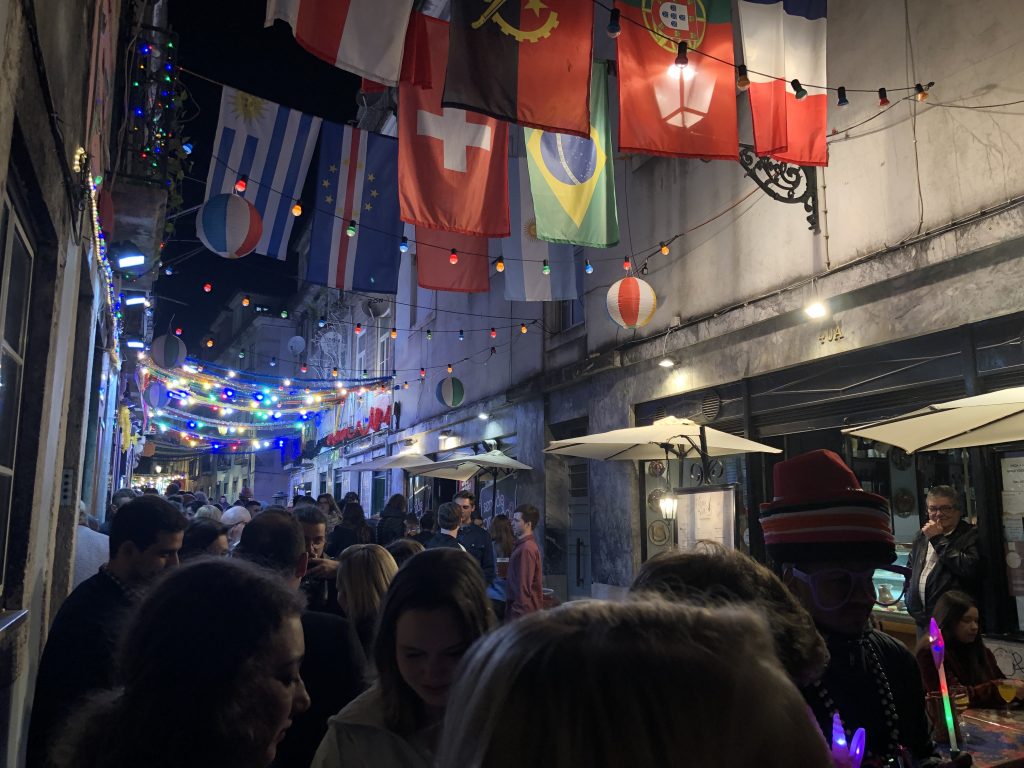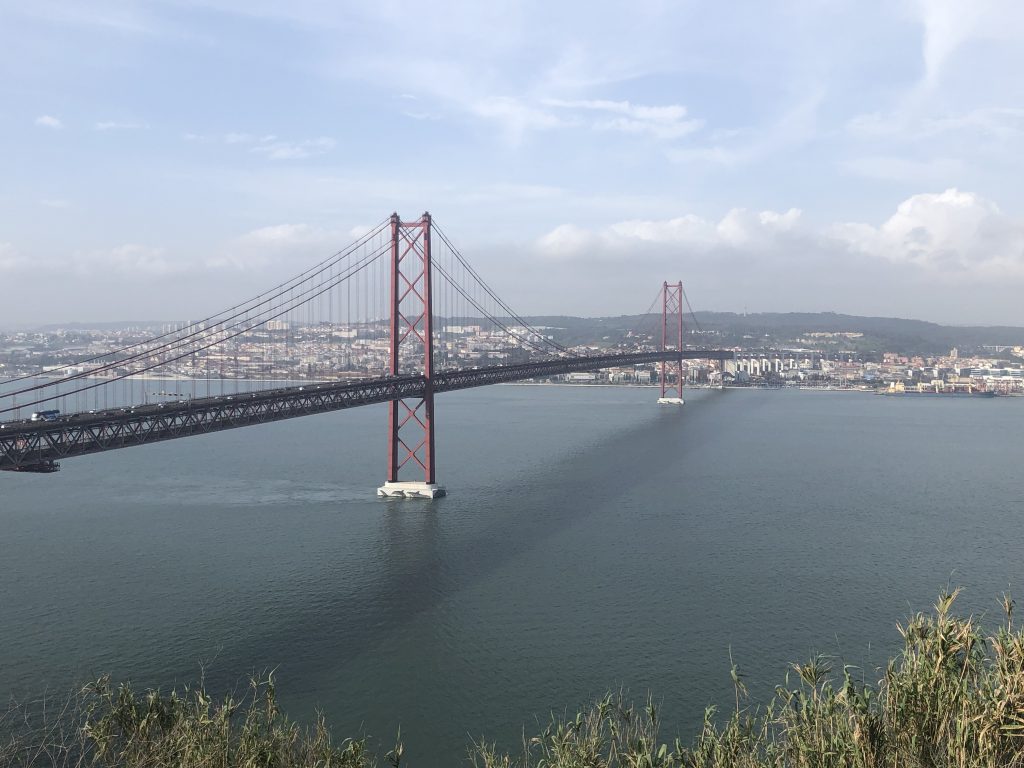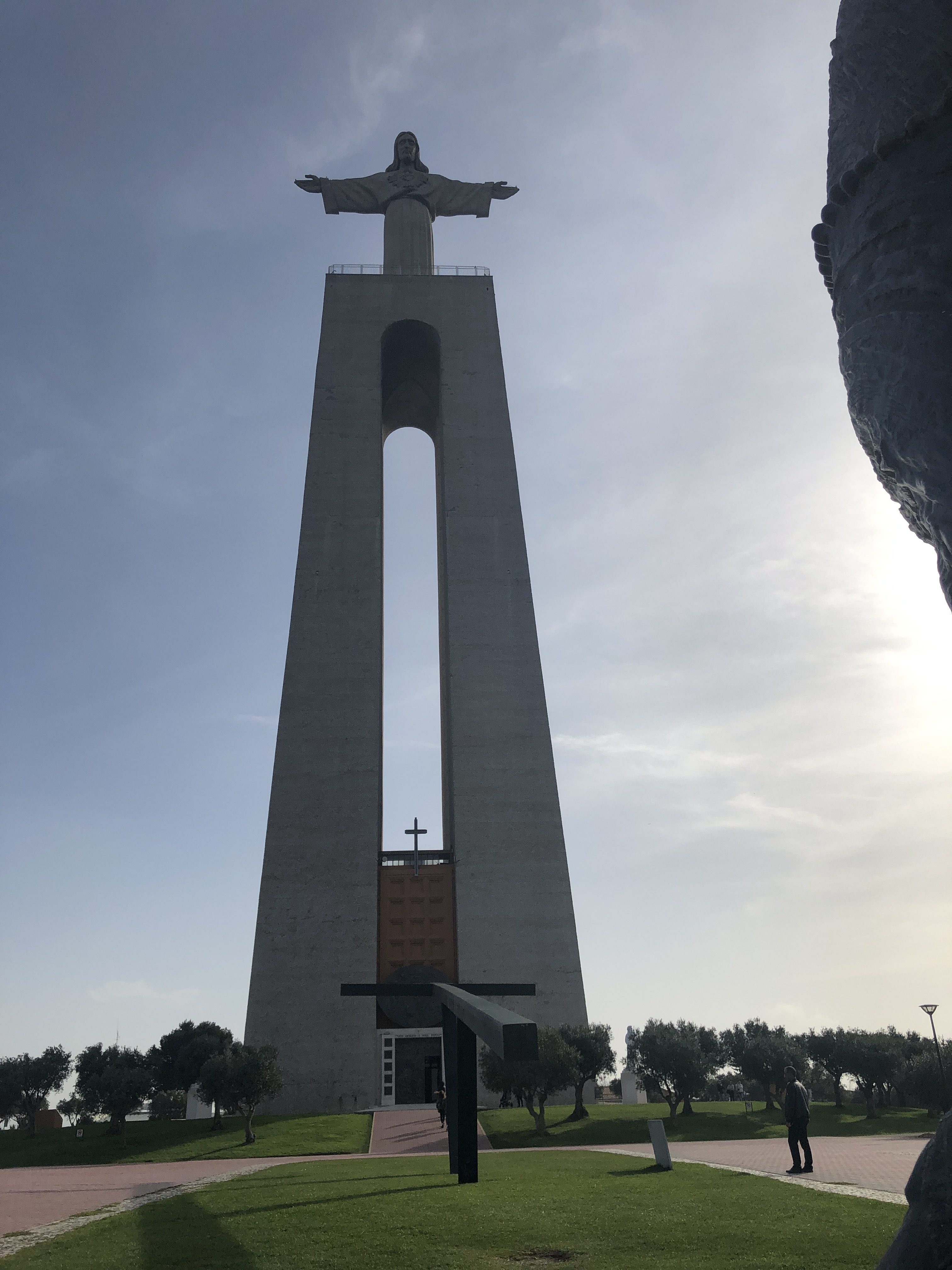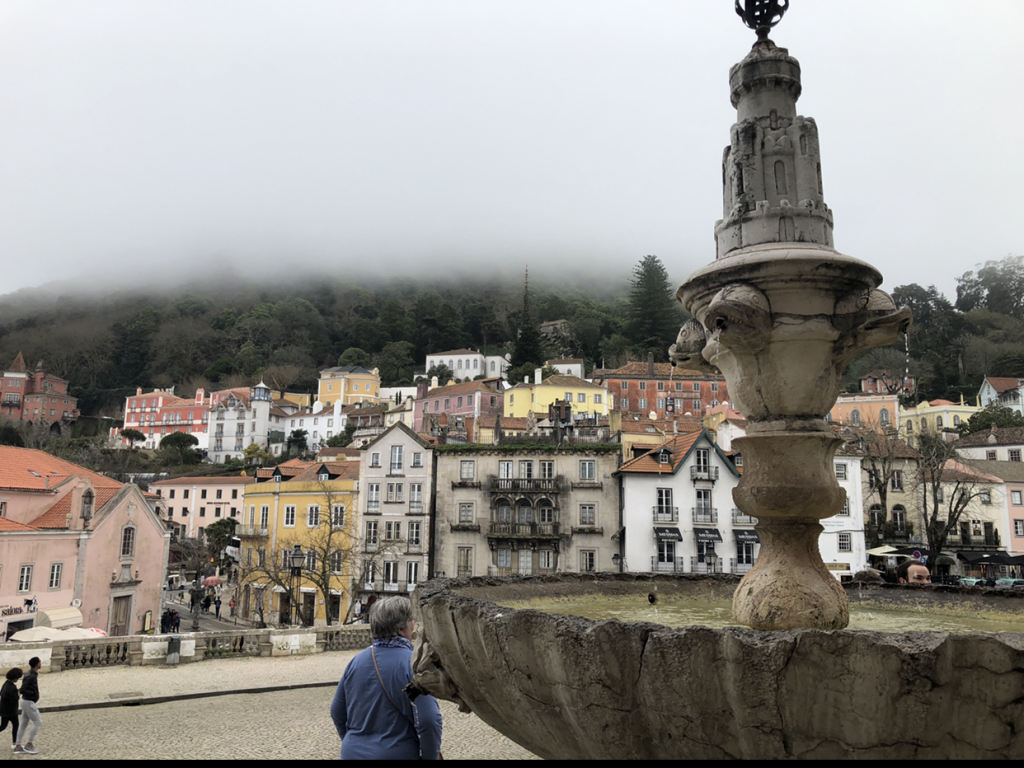
On Friday, February 7th, a group of about twenty CIEE students made their way onto a bus. This bus was heading to the infamous Lisbon, Portugal (or Lisboa as they say). We had the Airbnb, round trip tickets and passports ready. I came into the weekend without any expectations or notions as to what this experience would be like. As it turns out, Portugal is a very interesting place with an unexpectedly vibrant and fun culture.
Lisbon is unique within its own right. It is a very westernized city, with American food and culture hitting you from all sides. Most of this is catering to tourists, but you can easily recognize brands and foods that are identical to back home. However, there is a tapestry of seafood that can be enjoyed, and the ever delicious Pastéis de Nata – a cinnamon/lemon pastry that melts in your mouth. Like the United States, Lisbon is a big melting pot. People from all over the world are either flying into this port city or living indefinitely. There was not one culture that wasn’t represented. However, the majority of the population did speak Portuguese, which can be best described as a combination of Spanish and French while throwing in a Russian accent.

The entire city is built on a series of 6 very tall hills. If you weren’t walking up, you were walking down. The slick cobblestone and steep angles really made for a workout. You couldn’t get anywhere in the city without experiencing a pretty intense leg burn. But in a sense, this was a good thing. By the time we got back to our Airbnb, we had burned off all of our dinner!
Lisbon’s monuments were absolutely beautiful. There were large plazas with statues dedicated to the country’s heritage and history. The best of them all is the statue of Cristo Rei, which is a monument dedicated to Christ. The statue of Jesus stands 350 feet tall on a hill overlooking the bay area and city, arms outstretched as if to bless the people there. Cristo Rei was easily my favorite attraction.

The native food and monuments were breathtaking. I tried octopus for the first time, and was able to see so many new things. But like everywhere, Lisbon did have its problems. In my opinion, if traveling to Lisbon, travel in a large group as we did. Street vendors will try to stop you, follow you, and harass you with either cheaply made goods, or illegal substances (if you know what I am trying to say). If you walk straight, say no, and ignore them, they will leave you alone. I was very surprised by how many times it happened in the span of two short days. Nothing about this city ever seemed dangerous, but having a large group is definitely advised.
We also visited a town called Sintra. It is about an hour outside of Lisbon, and is known for its castles. This town and its monuments have hundreds of years of memories preserved and nestled into the side of a hill. Low hanging clouds were grazing the hilltops, almost creating a fog between the lush trees. Between the mist, palm trees and dense woods, I almost believed I was in a rainforest. The castle (called Quinta de Regaleira) and the castle-garden were the main attraction that day. The castle was built in c.a. 1400. Also lining the hill are chapels, towers, walls, and an intricate labyrinth of caves. We spent hours walking uphill through the woods. It was amazing being able to touch, smell, and see a place that is well over 600 years old.

Overall, this trip was unforgettable. I was able to take a small step back from Spain and its culture to learn a new one. Through the good and the bad, Lisbon, and all of Portugal for that matter, is a welcoming place that I would definitely recommend visiting.

